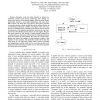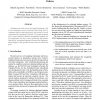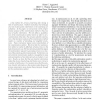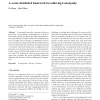404 search results - page 52 / 81 » Privacy Preservation for Data Cubes |
PVLDB
2010
13 years 8 months ago
2010
Random perturbation is a promising technique for privacy preserving data mining. It retains an original sensitive value with a certain probability and replaces it with a random va...
CSE
2009
IEEE
14 years 4 months ago
2009
IEEE
Abstract—Extensive work has been devoted to private information retrieval and privacy preserving data mining. To protect user privacy from search engines, however, most current a...
ICDE
2005
IEEE
14 years 11 months ago
2005
IEEE
Databases are at the core of successful businesses. Due to the voluminous stores of personal data being held by companies today, preserving privacy has become a crucial requiremen...
ICDE
2007
IEEE
14 years 11 months ago
2007
IEEE
A key method for privacy preserving data mining is that of randomization. Unlike k-anonymity, this technique does not include public information in the underlying assumptions. In ...
VLDB
2006
ACM
14 years 10 months ago
2006
ACM
k-anonymity provides a measure of privacy protection by preventing re-identification of data to fewer than a group of k data items. While algorithms exist for producing k-anonymous...




